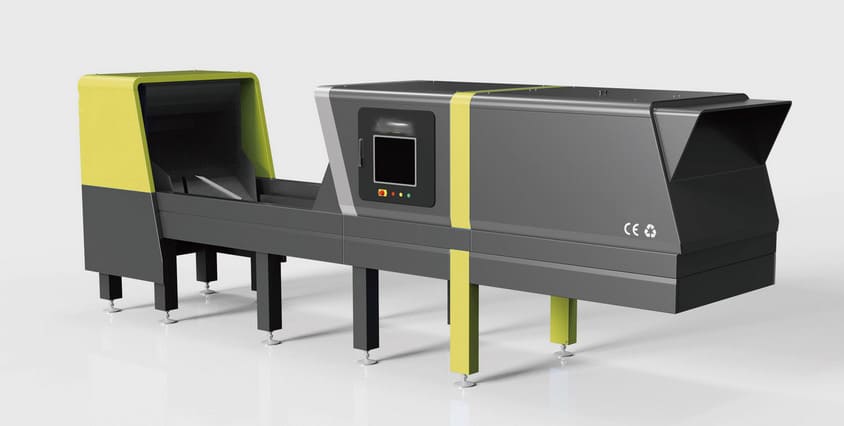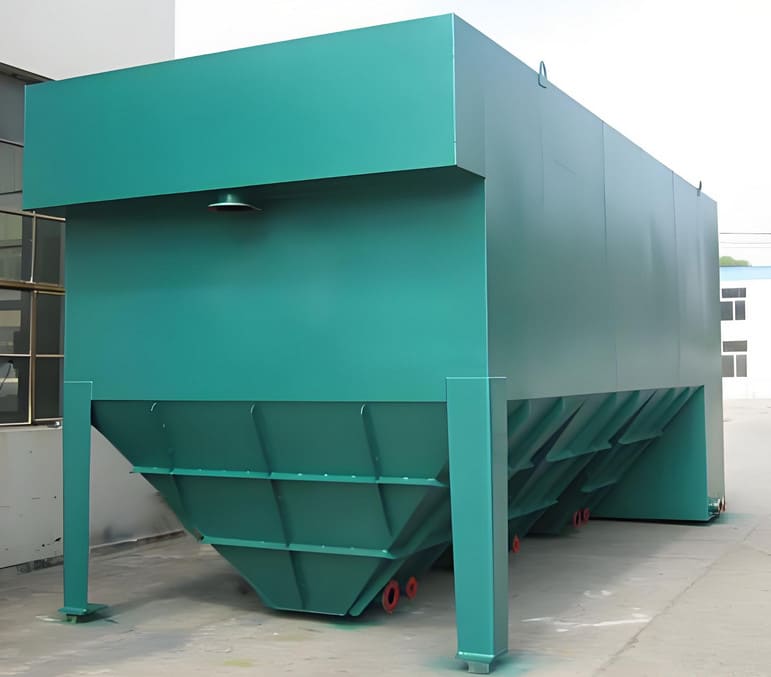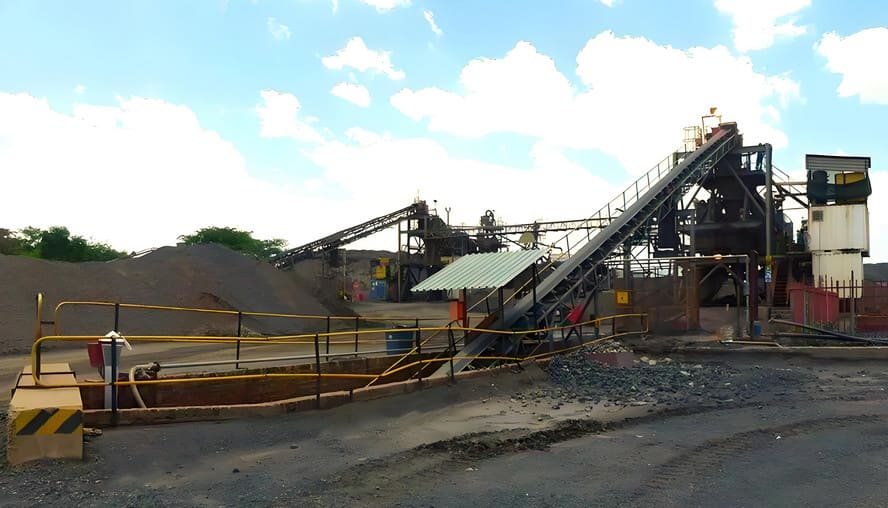Abstract
This article systematically introduces the various process flows of tungsten ore beneficiation, including key procedures such as pre-concentration and waste rejection, grinding, separation, slime treatment, and more. Starting with an overview of the fundamental principles of tungsten ore beneficiation, it provides a detailed analysis of technical essentials and equipment configurations for each process stage, followed by a summary of the latest industry trends. This serves as a comprehensive reference for professionals in the tungsten ore beneficiation sector.
Tungsten Ore Beneficiation Process
Introduction: The Significance of Tungsten Ore Beneficiation
Tungsten, a critical strategic metal, plays an irreplaceable role in industrial manufacturing, defense, aerospace, and other key sectors. The production of high-quality tungsten products begins with efficient beneficiation processes. This article provides a comprehensive understanding of the complete technical workflow for modern tungsten ore beneficiation, enabling you to grasp the essential process steps from raw ore to refined concentrate.
Core Principles of Tungsten Ore Beneficiation
Tungsten ore beneficiation must adhere to the principle of “recover early and recover more, discard early and discard more,” aiming to recover liberated tungsten minerals and discard waste rock as early as possible to minimize losses and costs. The core challenge lies in the fine-grained size of mineral grains (0.01–0.1 mm) and the presence of numerous interfering gangue minerals, necessitating step-by-step processing according to the flow sheet. Successful tungsten ore beneficiation must adhere to three fundamental principles to ensure efficiency and economic viability:
- "Early Recovery" Principle: Maximize the recovery of qualified concentrate at the initial stages to minimize valuable mineral losses.
- "Stage Grinding and Separation" Principle: Implement phased grinding and separation based on ore characteristics to avoid over-grinding and energy waste.
- "Differential Treatment" Principle: Apply targeted processes for materials of different grades and properties.
These three principles collectively form the foundation of tungsten ore beneficiation, guiding the design and execution of the entire production workflow.
Step-by-Step Breakdown of Tungsten Ore Beneficiation
1. Pre-concentration and Waste Rejection Process
Pre-concentration is the first crucial stage, aiming to separate waste rock at coarse particle sizes and improve the efficiency of downstream processes. The raw ore is first coarsely crushed to 50mm using a jaw crusher, then finely crushed to 15mm with a single-cylinder hydraulic cone crusher, before proceeding to pre-concentration:
Dry Pre-concentration: Utilize X-ray sorters or optical sorters for coarse waste rejection.
- Optical Sorting Machine: Separates black tungsten ore from gangue through color recognition, with a single-unit processing capacity of 100 t/h. This reduces the load on subsequent equipment and lowers energy consumption by 30%.

Wet Pre-concentration: For high-moisture ores, dense-medium cyclones may be employed.
- Heavy-medium cyclone: Utilizing density differences to remove over 80% of waste rock, elevating the grade of selected ore from 0.2% to over 1%.
Rejection Rate Control: Typically ranges between 30%-50%, depending on ore grade and waste content.
Technological Innovations: AI recognition technology enhances sorting accuracy.
This stage significantly reduces subsequent grinding energy consumption and reagent usage, boosting economic efficiency.
2. Detailed Grinding Process
Grinding ensures the effective liberation of tungsten minerals for subsequent separation.
- Stage Grinding: Usually involves two or three grinding stages.
- Ball Mill Selection: Choose appropriate-sized mills based on throughput.
- Classification Control: Closed-circuit systems with hydrocyclones or high-frequency screens.
- Particle Size Control: Target sizes typically range between 0.3-0.074mm.
- Energy Optimization: High-efficiency mills minimize specific energy consumption.
The finely crushed ore is fed into a grate-type ball mill and ground to a -200 mesh size distribution of 70% to 85%, ensuring thorough liberation of the tungsten minerals while preventing over-grinding that could lead to slurry loss. Proper grinding ensures mineral liberation while preventing excessive fines.
3. Separation Processes
Separation is the core stage, employing various methods:
- Gravity Separation: Shaking tables, spiral concentrators for coarse tungsten recovery.
- Flotation Process: For fine tungsten minerals using oleic acid-based collectors.
- Magnetic/Electric Separation: Applicable for complex ores with magnetic minerals.
- Integrated Separation: Combined methods improve overall recovery.
- Automation: Online analyzers enable real-time parameter adjustments.
Technology selection and parameter control directly impact final concentrate grade and recovery.
Tungsten ore separation tailored to mineral types:
- Primarily wolframite: Gravity separation is the main method. Coarse particles (>2mm) are separated using jigs, fine particles (0.037–2mm) using 6S shaking tables, and ultrafine particles (<0.037mm) using spiral chutes. The grade of coarse concentrate can reach 35%.
- Predominantly wolframite: Primary method is flotation. First, add xanthate to remove sulfide impurities like pyrite. Then adjust pH to 9–10 using sodium carbonate. water glass to suppress gangue, oleic acid-based collectors for flotation, and finally purified via the “Petrov heating method” (80°C heating + water glass replacement), elevating concentrate grade from 20% to over 65%.
- Mixed tungsten ores: Employ a “gravity separation + flotation combination” approach. First recover wolframite through gravity separation, then process pyrophyllite and fine-grained minerals via flotation.
- Slime Treatment Process
Fine slime (−19μm) requires specialized handling:
- Centrifugal Separation: Enhances recovery of ultra-fine particles.
- Flotation Columns: Efficiently concentrate slimes.
- Flocculation Precipitation: Chemical treatments for ultra-fine particles.
- Microwave-Assisted Processing: Emerging technology improving efficiency.
- Wastewater Treatment: Essential environmental protection measures.
Slime treatment remains a technical challenge affecting overall recovery rates. After removing ultra-fine slime particles smaller than 10μm from mineral slime less than 0.037mm via hydrocyclones, high-gradient magnetic separators can recover fine black tungsten ore slime, while flotation machines can process fine white tungsten ore slime. This approach increases the overall recovery rate by 8%.

5. Chemical Beneficiation Methods
For low-grade middlings or mixed concentrates where physical separation is ineffective, chemical methods are employed:
- Soda Leaching: Converting tungsten into sodium tungstate, followed by impurity separation and reduction to tungsten powder;
- Acid Leaching: Dissolving wolframite with hydrochloric acid, suitable for ores rich in calcium gangue.
Chemical beneficiation often requires higher investment but is effective for difficult ores.
6. Concentrate Refining and Tailings Handling
Final stages ensure product quality and environmental compliance:
- Concentrate Dewatering: Filtration and drying for marketable products.
- Impurity Removal: Elimination of harmful elements (e.g., P, S).
- Tailings Management: Dry stacking, backfilling, or resource utilization.
- Water Recycling: Closed-loop water systems.
- Environmental Standards: Meeting increasingly stringent regulations.
The coarse concentrate obtained from sorting undergoes dewatering and drying before being sent to the smelter for further purification. Tailings are dewatered via thickeners and stockpiled, with some recoverable associated minerals (such as cassiterite and fluorite).
Equipment Configuration Reference
Crushing System: Jaw crusher + cone crusher combination.
Pre-concentration Equipment: XRT intelligent sorters or dense-medium cyclones.
Grinding System: MQG ball mill + hydrocyclone classifier.
Separation Equipment: Shaking tables, flotation cells, HGMS systems.
Slime Treatment: Centrifugal concentrators + flotation columns.
Dewatering Equipment: Ceramic filters + paddle dryers.
Automation: Online analyzers + PLC control systems.
Equipment selection depends on capacity, ore characteristics, budget, and other factors.

Industry Trends in Tungsten Ore Beneficiation
Currently, the tungsten ore beneficiation industry is advancing toward greater efficiency, environmental sustainability, and intelligent operations. With declining tungsten ore grades, stricter environmental regulations, and technological advancements, beneficiation processes increasingly prioritize low energy consumption, high recovery rates, and eco-friendly treatment. This includes optimizing combined flotation-gravity separation techniques, applying bioleaching technologies, and implementing harmless treatment of wastewater and waste residue. Simultaneously, automated control systems (such as AI-driven mineral processing and online monitoring) and smart mine construction are becoming increasingly widespread to enhance production efficiency and resource utilization. Furthermore, driven by downstream demand from new energy and high-end equipment manufacturing sectors, the growing need for high-purity tungsten products is propelling mineral processing technology toward high-precision purification. Looking ahead, the industry is expected to accelerate consolidation, with green, low-carbon practices and digital technologies emerging as core competitive advantages.
